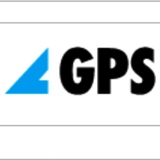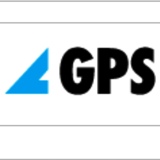Information
-
Audit Title
-
Document No.
-
Client / Site
-
Conducted on
-
Prepared by
-
Location
-
Personnel
Limitations of Use
-
Before using this template you must sign to indicate that you understand and agree to the limitations and conditions of use which are available at: http://www.integrityassociates.co.uk/risk-management/puwer-tool-limitations-of-use
Details of Equipment being assessed:
-
Equipment Description
-
Make and Model
-
Serial Number
-
Other details - e.g. More details of location, department etc
-
Answer each Question, making sure you click on the [...] to expand the full question details. Add details to reinforce the reason for your response. If in doubt, ALWAYS select "No" and seek specialist advice.
Regulation 4 - Suitability of Work Equipment
-
Is the work equipment suitable for:<br>All the task(s) it is intended to be used for,<br>The environment, location, space, ventilation and conditions in which it is (or may) be used,<br>All the people that will (or may) use it, taking into account ergonomics aspects?
Regulation 5 & 6 - Maintenance and Inspection
-
Are arrangements in place for ensuring that the equipment is properly maintained and if necessary inspected to ensure it continues to operate as intended ?<br>(Pay particular attention to the maintenance of any safety features, guards, interlocks etc. and to the need for regular inspection where the operating conditions or environment may result in deterioration of the equipment.)
Regulation 7 & 8 - Specific Risks, and Information & Instructions
-
Have all (non-trivial) risks associated with setting, operating, adjusting, cleaning, and maintaining the equipment been identified?<br><br>N.B. the risks must include consideration of foreseeable abnormal situations, equipment malfunction and misuse.
-
Has everyone involved in setting, operating, adjusting, cleaning, and maintaining the equipment been given WRITTEN information and instruction in how to perform those tasks safely and are you certain that they understand the information and instructions?<br><br>N.B. the information provided must include consideration of foreseeable abnormal situations, equipment malfunction and misuse.
Regulation 9 - Training
-
Are suitable arrangements in place to ensure that anyone involved in setting, operating, adjusting, cleaning, or maintaining the equipment has had any necessary training?
Regulation 10 - Conformity with Community Requirements
-
Have you checked the CE Marking and Certificates/Declarations of Conformity for the equipment and are you confident that it has been declared as compliant with ALL RELEVANT EU DIRECTIVES ?<br>N.B. if there are powered moving parts the Declaration of Conformity MUST make reference to the Machinery Directive; any electrical equipment MUST be covered by the “Low Voltage Directive” and also the “Electromagnetic Compatibility Directive”. Other directives may also apply (Pressure Equipment.)<br>This is a key area where you may need specialist advice/support, particular caution is required for equipment IMPORTED from outside the EU.
Regulation 11 - Dangerous parts of Machinery
-
Are there robust PHYSICAL measures (guarding, interlocks) to prevent anyone from being able to come into contact with any parts of the equipment that could cause any foreseeable injury that would require treatment or result in absence from work?<br><br>N.B. you must NOT rely on just warning signs or instruction/training to respond YES to this question.
-
N.B In answering the following questions about guarding you must consider ALL phases of the equipment’s use (Setting, Operating, Cleaning, Maintenance and also any recovery from abnormal situations/equipment malfunctions.) Are ALL the Guards....
-
(a) suitable for the purpose for which they are provided;
-
(b) of good construction, sound material and adequate strength;
-
(c) maintained in an efficient state, in efficient working order and in good repair;
-
(d) not able to be easily bypassed or disabled; (fixed guards MUST need special tools to remove them; interlocked guards must NOT be able to be overridden)
-
(e) situated at sufficient distance from the danger zone;
-
(f) not unduly restricting the view of the operating cycle of the machinery, where such a view is necessary;
Regulation 12 – Protection against specified hazards.
-
Are there adequate measures provided to prevent:-<br>(a) anything falling or being ejected from work equipment;<br>(b) rupture or disintegration of parts of work equipment;<br>(c) work equipment catching fire or overheating;<br>(d) the unintended or premature discharge of any article or of any gas, dust, liquid, vapour or other substance which, in each case, is produced, used or stored in the work equipment;<br>(e) explosion of the work equipment or any article or substance produced, used or stored in it.
Regulation 13 - High or very low temperature
-
Is there adequate protection to prevent any injury caused by contact with any parts of the equipment or any materials that are at high or very low temperatures?
Regulation 14 - Controls for starting or making a significant change in operating conditions.
-
Is the equipment designed so that it can only be started (or re-started after being stopped*) by a deliberate action by an operator using clearly defined controls?<br><br>N.B. “being stopped” includes being stopped for ANY reason including due to any interlock or other safety device having been triggered.
Regulation 15 – Stop Controls
-
Has the equipment got readily accessible controls which will bring the work equipment to a safe condition in a safe manner?
-
Does the “Stop Control” bring the equipment to a complete stop and switch off all sources of energy after stopping the functioning of the work equipment?
Regulation 16 – Emergency Stop Controls
-
Has the equipment got one or more readily accessible emergency stop controls, and are they available at every location where a person may need to activate them in order to prevent danger or injury to themselves or others ?
-
Do the emergency controls “latch closed” so that they require a deliberate action to release and reset them before the equipment can be re-started ?<br>(N.B. the equipment must NOT re-start when the emergency stop is re-set unless deliberately re-started using one of the correct “Start Controls”.)
Regulation 17 – Controls
-
Are all controls for the equipment clearly visible and identifiable?
-
Are all controls for the equipment in a position where any person operating the equipment is not exposed to a risk to their health and safety?
-
Are all controls for the equipment in a position so that the operator of any control is able to ensure that no-one is in a place where they would be exposed to any risk to their health or safety as a result of the equipment being started ?
Regulation 18 – Control Systems
-
Are the control systems designed such that any fault in, or damage to any part of, the control system or the loss of supply of any source of energy used by the work equipment cannot result in additional or increased risk to health or safety?
Regulation 19 - Isolation from sources of energy
-
Are there clearly identifiable and readily accessible means of securely isolating the equipment from ALL sources of energy ?
-
Is the equipment designed such that re-connection of any energy source does not expose anyone to any risk to their health or safety?<br>(e.g. the equipment should not start operating as a result of re-connection of a power supply or other energy source.)
Regulation 20 - Stability
-
Is the equipment stable in all modes of operation and under all foreseeable loading conditions.<br>i.e. prevented from toppling over, moving in an unpredictable or dangerous manner
Regulation 21 - Lighting
-
Is there adequate lighting, taking account of the operations to be carried out during all modes of operation of the equipment? (e.g. This includes adequate lighting for maintenance of inaccessible parts of the equipment etc...)
Regulation 22 - Maintenance operations
-
Can all maintenance operations on the equipment which involve a risk to health or safety be carried out while the work equipment is shut down and isolated fully from all sources of energy?
Regulations 23 and 24 – Markings and Warnings
-
Has the equipment got appropriate markings and warnings and are they all unambiguous, easily perceived and easily understood?
Assessment Sign Off
-
This assessment was performed by the undersigned and is a true and accurate reflection of the equipment on the date of the assessment.














